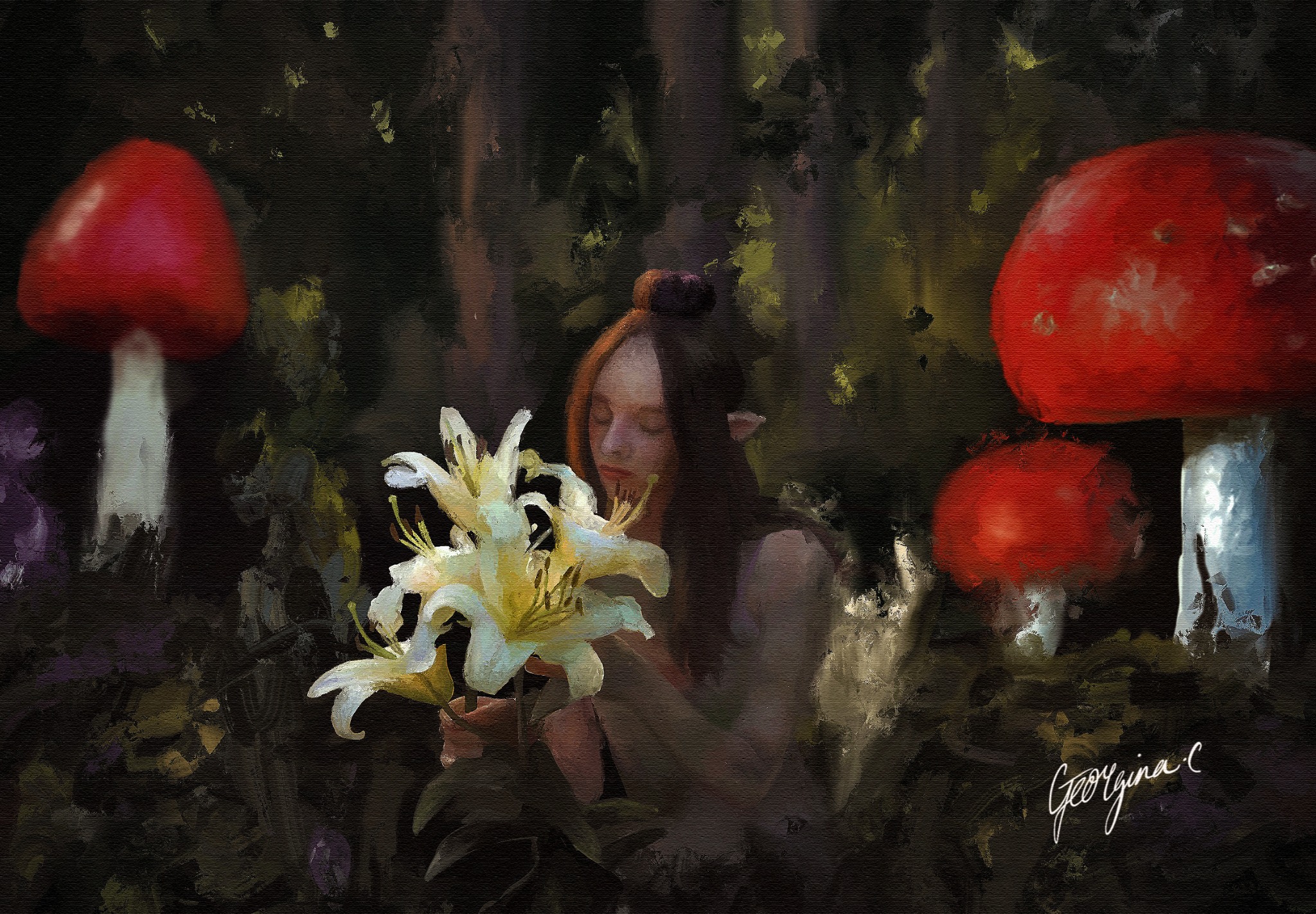
Ainu (2023)
Ainu (2023) reimagines folklore through a lens of quiet reverence. Merging Baroque light with mythic naturalism, Georgina M. Cox portrays a figure in communion with the natural world
⤷ When I painted Ainu, I wanted it to feel like stepping into a dream that doesn’t quite reveal its meaning. The piece draws on my fascination with myth, nature, and identity, and with the way human presence can dissolve into the landscape, becoming part of something older and quieter.
The figure kneels among enormous lilies, surrounded by towering red mushrooms that seem almost sentient. Her delicate, pointed ears hint at something beyond human, but her posture is soft and grounded. I wanted her to feel at home in this strange place, as if the forest itself recognises her.
The title Ainu carries layered significance. It references the Indigenous people of Japan, whose deep spiritual connection to nature has long inspired me—not through direct representation, but through a shared sense of reverence and belonging. The word Ainu also translates to "human being" in their language, which echoes the heart of the painting: to be human is to exist as part of the earth, not apart from it.
Lighting became the emotional centre of this work. Luminous whites and greens cut through the dark forest backdrop, recalling Baroque chiaroscuro where divinity is suggested rather than declared. The lilies appear to emit their own light, casting the red mushrooms and forest floor in a quiet, surreal glow.
Compositionally, I wanted to balance realism and fantasy without allowing either to dominate. The brushwork remains loose and atmospheric, allowing mood to take precedence over detail. You can almost feel the damp air and the stillness of the forest, as though time slows around her.
Thematically, Ainu continues my exploration of feminine stillness and spiritual intimacy with the natural world. It speaks to identity beyond language or societal form—where peace is found not in control, but in coexistence.
In many ways, Ainu is a kind of prayer. Not a religious one, but an emotional gesture towards harmony, quiet wonder, and returning to the source.
0 Comments Add a Comment?